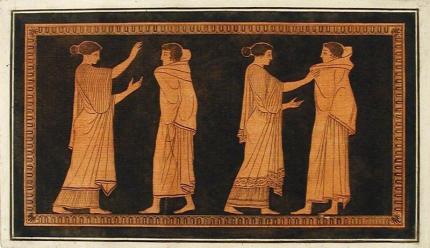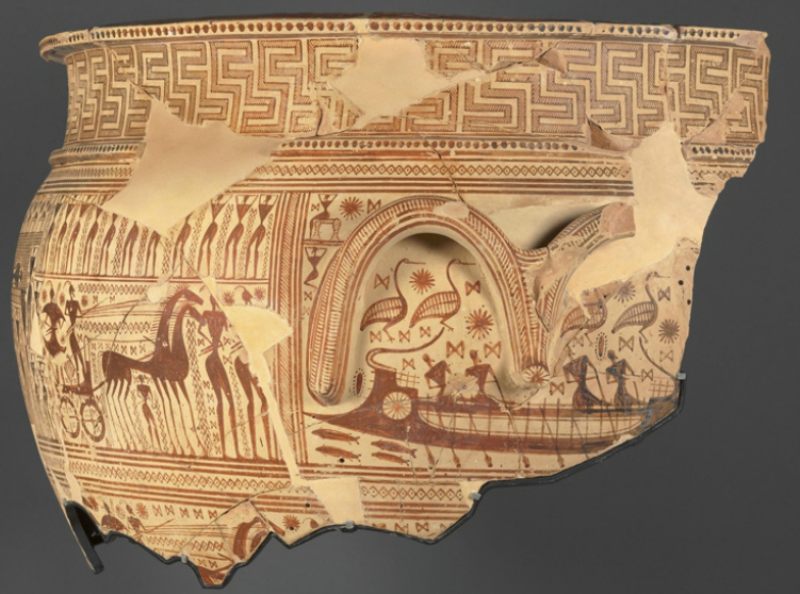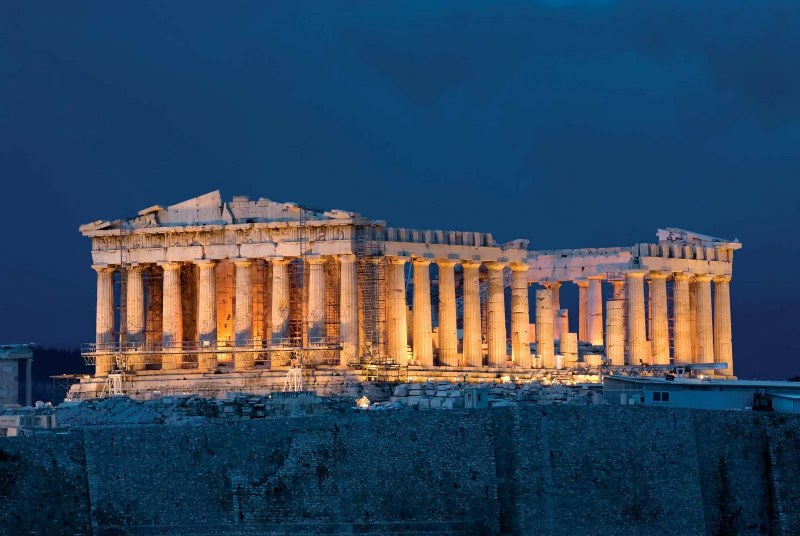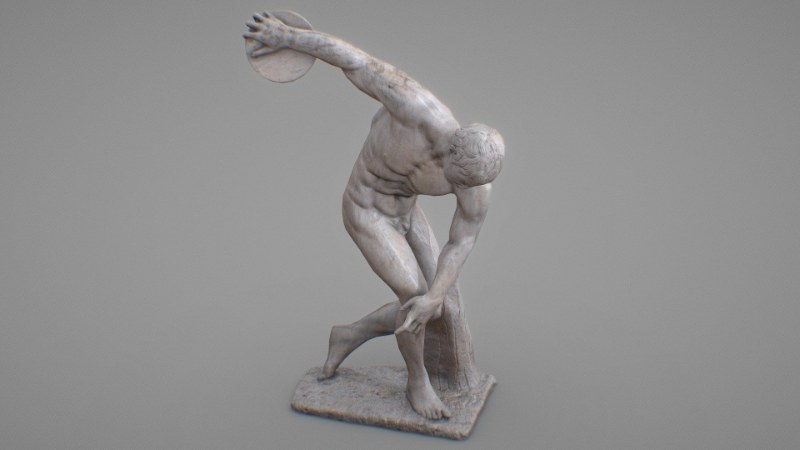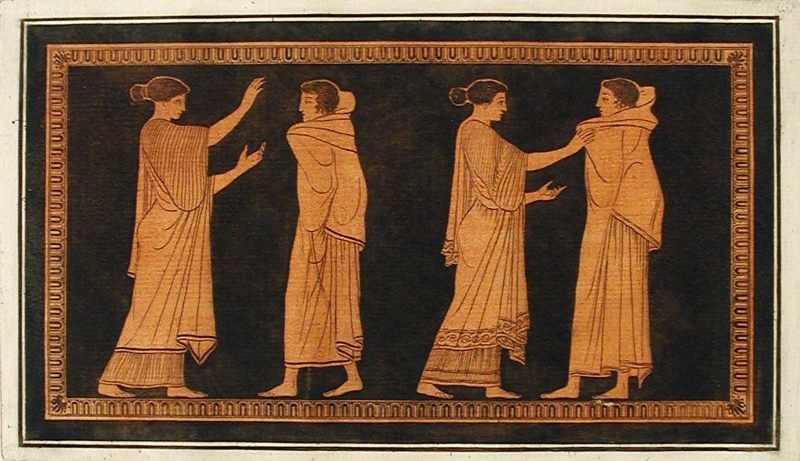Get free consultation
Fill out the form and we will contact you
Ancient Greek art is one of the foundations of Western civilization, exerting a timeless influence on art and architecture worldwide. This article will explore the key aspects of ancient Greek art—stay tuned.
Ancient Greek art developed from the 8th century BCE to the 1st century CE, passing through several periods, each with distinct characteristics. Understanding this historical development helps settlers appreciate the cultural heritage they will encounter.
The earliest period of ancient Greek art is characterized by abstract geometric patterns:
Dipylon vases decorated with complex geometric patterns
Ceramics: Decorated with simple geometric motifs such as circles, triangles, and zigzag lines
Sculpture: Small bronze and terracotta works with simple shapes and stylized human figures
Dipylon Vases: Large ceramic vases decorated with complex geometric patterns, often used as grave markers
This style reflects the early developmental stage of Greek art, when artists were searching for a distinct visual language.
This period witnessed the transition from geometric styles to more natural forms:
Kouros and Kore: Statues of young men (kouros) and maidens (kore) standing rigidly, reflecting the influence of Egyptian art
Black-figure pottery: Pottery decorated with black human and animal figures on a red background
Red-figure pottery: Developed after black-figure pottery, featuring red figures on a black background, allowing finer details
Temple sculpture: Reliefs decorating the facades and friezes of temples, depicting mythological stories
This period marked significant advancements in technique and subject matter, as Greek art gradually developed its own identity.
Considered the golden age of Greek art, this period pursued ideals of balance, harmony, and ideal beauty:
Masterful sculptures: Works by Phidias, Myron, and Polykleitos portraying the human body with perfect proportions.
Parthenon: Temple of the goddess Athena on the Acropolis hill, exemplifying classical Greek architecture and sculpture.
Severe style: Early phase of the classical period, characterized by seriousness and restrained emotion.
Contrapposto: Sculptural technique with a natural stance, weight shifted onto one leg, creating a relaxed and lifelike pose.
The Parthenon is the temple of the goddess Athena on the Acropolis hill
This period marked the peak of Greek art, achieving an ideal balance between naturalism and idealization.
After the death of Alexander the Great, Greek art underwent significant changes:
Dramatic style: Sculptures expressing intense emotion and dynamic movement
Realism: Focused on depicting people of all ages and conditions, not just idealized youth
Nike of Samothrace: Statue of the goddess of victory with wings spread and garments flowing in the wind
Laocoön group: Sculpture depicting the Trojan priest Laocoön and his sons struggling with sea serpents, conveying pain and terror
The Hellenistic period expanded the range of subjects and styles in Greek art, inspiring later Roman art and influencing Western art for centuries.
Ancient Greek architecture is renowned for its elegant temples and column systems, which have become iconic:
Column orders:
Doric: Simple and sturdy, without a base, with a plain capital
Ionic: More elegant, featuring characteristic spiral scrolls on the capital
Corinthian: The most elaborate, with capitals decorated with acanthus leaves
Notable architectural works:
Parthenon: A perfect Doric temple on the Acropolis hill in Athens
Erechtheion: A complex Ionic temple featuring the famous Caryatid porch
Epidaurus Theatre: An outdoor theatre with exceptional acoustics, still in use todayn ngày nay
Temple of Apollo at Delphi: An important religious center in ancient Greece
The principles of balance and harmony in Greek architecture continue to influence modern architecture, from government buildings to universities and museums.
Ancient Greek sculpture focused on depicting the ideal human form:
Discobolus by Myron as the discus thrower
Freestanding sculpture: Three-dimensional statues viewable from all angles
Discobolus by Myron: The discus thrower, capturing the perfect moment of movement
Doryphoros của Polykleitos: Thể hiện hệ thống tỷ lệ lý tưởng cho cơ thể nam giới
Aphrodite of Knidos: Work by Praxiteles, one of the first female nudes in Greek art
Relief sculpture: Sculptures raised on a flat surface
Parthenon frieze: Depicts mythological stories and religious festivals
Altar of Zeus at Pergamon: Monumental relief showing the battle between gods and giants
Ancient Greek sculpture not only pursued ideal beauty but also demonstrated a profound understanding of human anatomy and movement.
Although very few examples of ancient Greek painting have survived to the present day, we can still understand their style and techniques through:
Vase painting: Scenes painted on pottery, providing images of daily life, mythology, and ritualsễ
Black-figure pottery: Black figures on a red background
Red-figure pottery: Red figures on a black background
Wall painting: Known mainly through Roman copies and descriptions in ancient texts
Pompeii murals: Many murals in Pompeii are believed to be based on lost Greek masterpieces Lạp đã mất
Mosaic: Images created from small pieces of stone
Alexander Mosaic: Discovered in Pompeii, possibly a copy of a Greek painting depicting Alexander the Great
Greek painting and pottery not only hold artistic value but also provide valuable insights into the social, religious, and political life of ancient Greece.
Preserving the artistic heritage of ancient Greece faces numerous challenges:
Environmental pollution: Air pollution and acid rain threaten outdoor marble monuments
Climate change: Extreme weather and rising sea levels endanger coastal sites
Mass tourism: Large numbers of visitors put pressure on fragile monuments
Limited resources: Restricted budgets for conservation, especially following the Greek financial crisis
Let’s preserve the heritage of ancient Greek art
International disputes over the ownership of ancient Greek art continue:
Elgin/Parthenon Marbles: Ongoing dispute between Greece and the United Kingdom regarding the return of the Parthenon marbles at the British Museum
Artifacts from 19th-century excavations: Many major museums worldwide hold Greek artworks acquired during the colonial era
International law: Development of treaties and agreements to protect cultural heritage and prevent the illicit trade of antiquities
Ancient Greek art is not only the foundation of Western aesthetics but also a symbol of the perfect blend of technique, philosophy, and humanistic spirit. From architecture and sculpture to painting, each work embodies profound historical value and timeless artistic thought.
If you are interested in exploring ancient Greek art and settling in Greece, don’t miss the Greek citizenship program at quoctichthuhai.com. Contact them now for professional guidance!
Fill out the form and we will contact you
